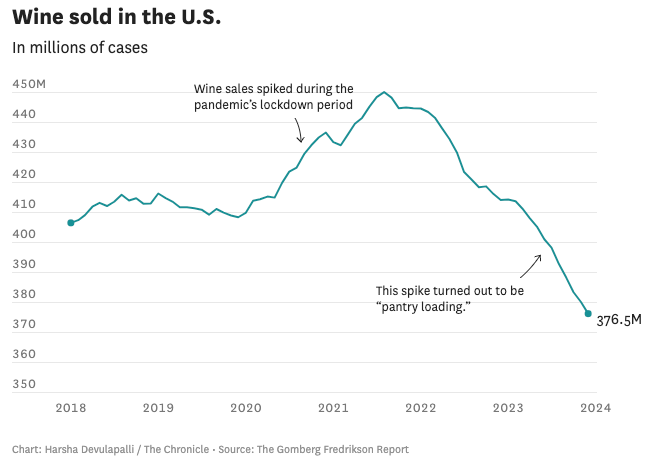Autonomous equipment: Subsidies & Labor
How subsidies, labor costs, and equipment utilization impacts ROI
What is the common thread between the anomalous increase in pandemic era wine consumption, the incoming US presidential administration, and climate policies in California?
Monarch Tractor just announced they are laying off 10% of their workforce, (35 out of about 350 people) (highlights by me)
as part of a restructuring that will see it prioritize non-agricultural customers, license its autonomous technology, and boost sales of its AI-powered farm management software.
Monarch Tractor is a provider of all electric autonomous tractors in the sub-100 hp range. Their primary customers are specialty crop growers in California. Monarch recently (in July) raised $ 133 million in July, bringing their total money raised to a whopping $ 220 million.
I have noticed this often where companies raise a round and then change their product portfolio, or go-to-market approach. It necessitates a restructuring of the company as slightly different skill sets are required, and you have to make room to make those additional investments.
(I have personal experience with this. In 2012, I joined a startup called HarvestMark. They had recently raised a $ 25 million round, and within a few months laid off a majority of the company as they pivoted to a different business model).
Crashing demand for wines and ag equipment
Monarch and the agriculture equipment space are facing certain headwinds. In the case of Monarch, their early and primary customers have been wine growers in the state of California. Wine grapes is a high value crop, and one of the prime targets for technology companies to go after. Wine is also a discretionary spending item, which people can dial up or down depending on how they are feeling about their finances.
During the pandemic, our family ended up becoming wine club members at multiple wineries in California. After spending many hours on video calls every day, drinking wine in the evening was a convenient way to unwind, for people who could afford it. Our wine consumption shot up.
But after the pandemic was over, and prices shot up due to inflation, we found ourselves not renewing many of our wine club memberships and being selective with ordering wine when we went out to eat.
Our personal experience was reflected in the data as well. As the San Francisco Chronicle reported in an article, “California Wine is in Serious Trouble” during summer. Some wineries have seen sales drop for the first time in 2 decades.
Meanwhile, with fewer people going out to restaurants post-COVID, wineries saw a key sales channel wane. Rising interest rates drove distributors to reduce their inventories, buying less from wineries. Because there’s a yearslong lag between the time a wine is made and the time it’s sold, it took a while before wineries could notice these effects — let alone do anything about them.
Keep reading with a 7-day free trial
Subscribe to Software is Feeding the World to keep reading this post and get 7 days of free access to the full post archives.





